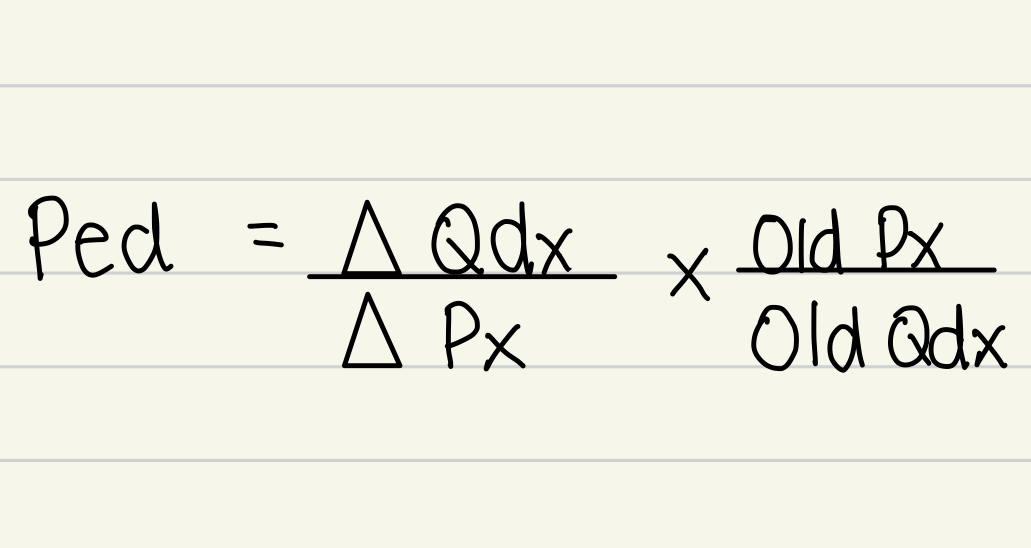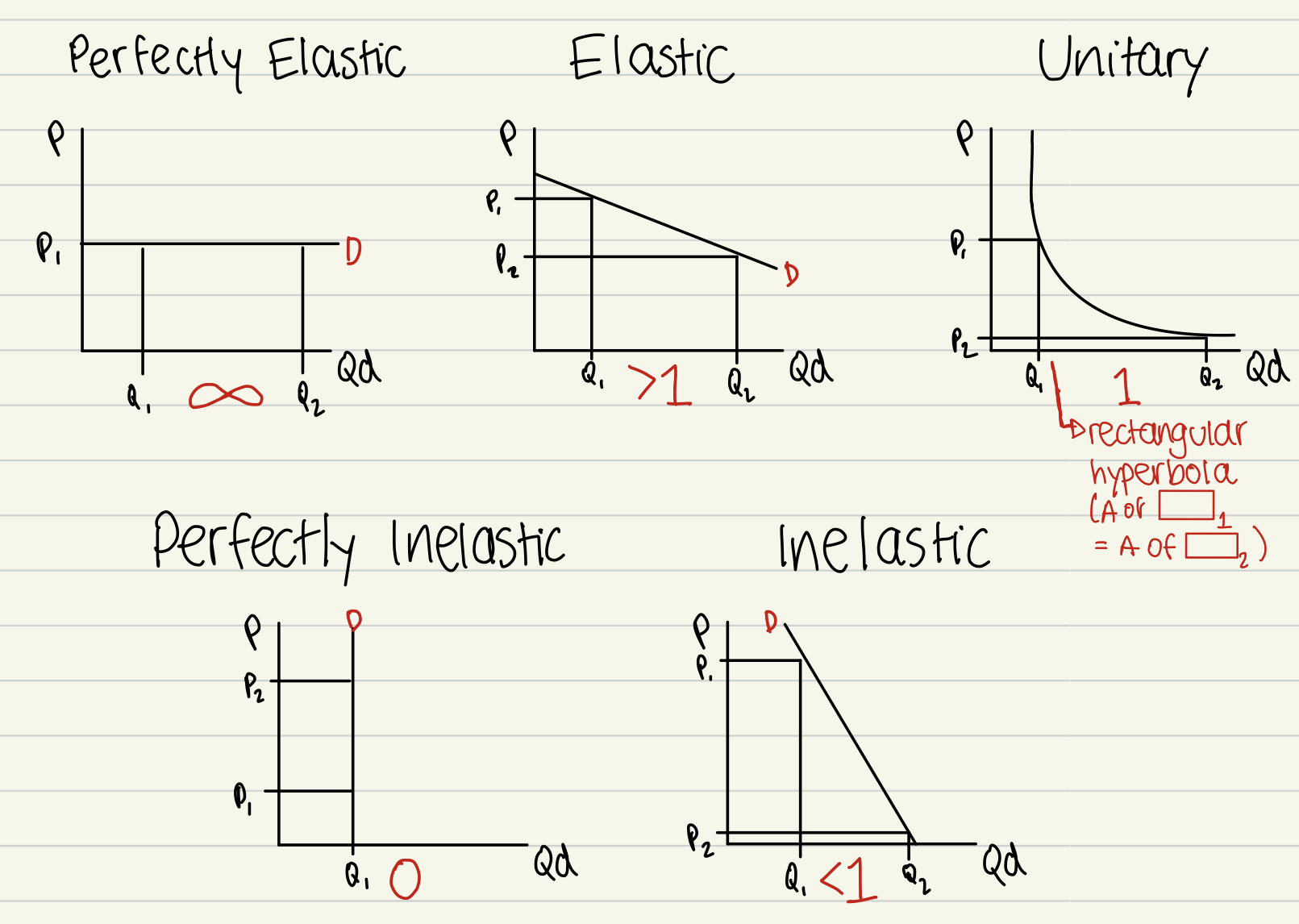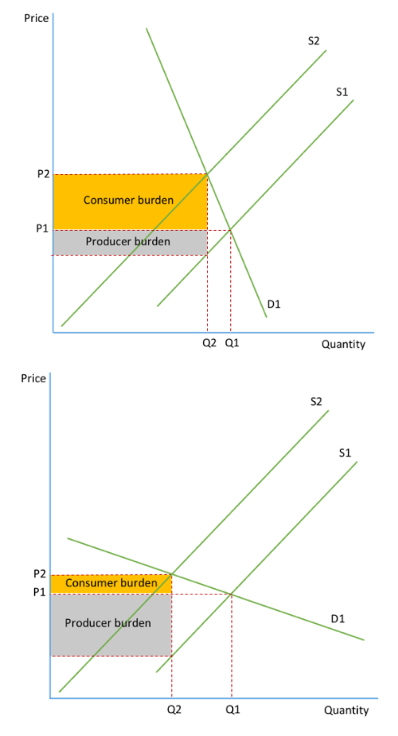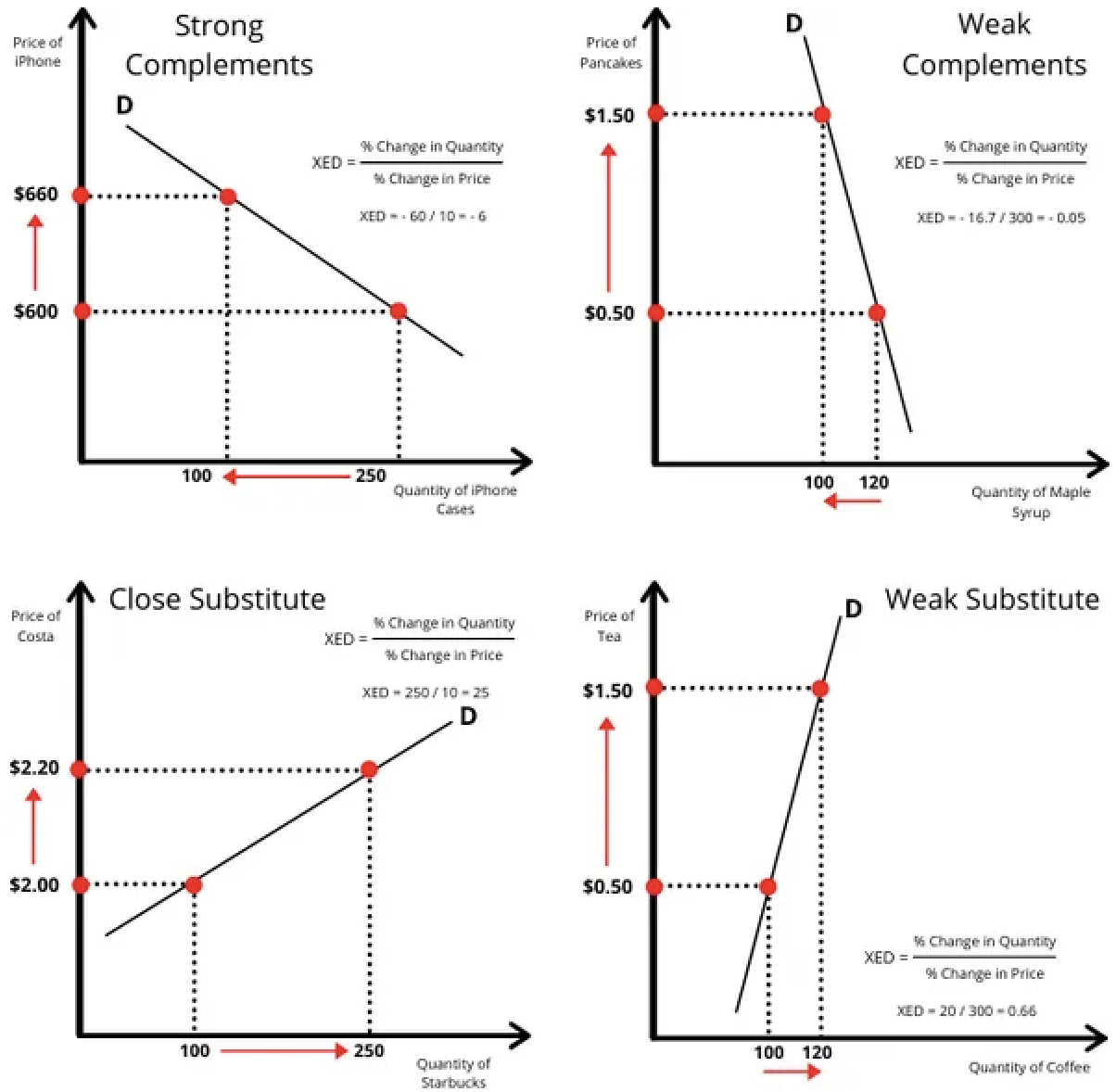1.2.3 Price, income and cross elasticities
5.0(1)
5.0(1)
Card Sorting
1/22
Earn XP
Description and Tags
Study Analytics
Name | Mastery | Learn | Test | Matching | Spaced |
|---|
No study sessions yet.
23 Terms
1
New cards
price elasticity of demand
the responsiveness of a change in demand to a change in price
2
New cards
formula for PED
PED = %change in Qdx / %change in Px

3
New cards
formula for percentage change
%change = (new - original) / original x100
4
New cards
price elasticity - numerical values
- perfectly elastic: infinity
- elastic: > 1
- unitary elastic: 1
- inelastic: < 1
- perfectly inelastic: 0
- elastic: > 1
- unitary elastic: 1
- inelastic: < 1
- perfectly inelastic: 0
5
New cards
price elasticity - definitions
- perfectly elastic: extreme response in %Qdx to almost no change in %Px
- elastic: bigger change in %Qdx than change in %Px
- unitary elastic: equal change in %Qdx compared to %Px
- inelastic: smaller change in %Qdx compared to %Px
- perfectly inelastic: no response %Qdx compared to change in %Px
- elastic: bigger change in %Qdx than change in %Px
- unitary elastic: equal change in %Qdx compared to %Px
- inelastic: smaller change in %Qdx compared to %Px
- perfectly inelastic: no response %Qdx compared to change in %Px
6
New cards
price elasticity - graphs

7
New cards
factors of price elasticity of demand
nature of commodity: necessity=inelastic, comfort=elastic, luxury=more elastic
substitutes: more substitutes=elastic, less substitutes=inelastic
number of uses(durability): single use=inelastic, multi use=elastic
habits(addictiveness): addictive=inelastic
time period: short period=inelastic, long period=elastic (more substitutes available)
urgency of needs: urgent=inelastic
level of income: higher income=inelastic
proportion of total expenditure spent: higher proportion=elastic
8
New cards
significance of PED - indirect taxes
- determines the effects of the imposition of indirect taxes and subsidies
- if PED is elastic: a tax will only lead to a small increase in price and the supplier will have to cover the majority of the cost of the tax
- if PED is inelastic: tax will mainly be passed onto the consumer, tax will be ineffective at reducing output but there will be a higher tax revenue for the gov.
- if PED is elastic: a tax will only lead to a small increase in price and the supplier will have to cover the majority of the cost of the tax
- if PED is inelastic: tax will mainly be passed onto the consumer, tax will be ineffective at reducing output but there will be a higher tax revenue for the gov.

9
New cards
significance of PED - subsidies
SHIFT FROM S2 TO S1: subsidy
- if PED is elastic: consumer sees small fall in price, producer gains lots more revenue, large change in output following a subsidy
- if PED is inelastic: bigger fall in price but ineffective at increasing output - cheaper for gov to impose as output increases by less so the gov have to pay subsidies on less goods
- if PED is elastic: consumer sees small fall in price, producer gains lots more revenue, large change in output following a subsidy
- if PED is inelastic: bigger fall in price but ineffective at increasing output - cheaper for gov to impose as output increases by less so the gov have to pay subsidies on less goods

10
New cards
expenditure
money paid by consumer
11
New cards
revenue
money earned by worker
12
New cards
price inelastic vs revenue
total revenue PROPORTIONAL to change in price
- increase in price = increase in revenue
- decrease in price = decrease in revenue
- increase in price = increase in revenue
- decrease in price = decrease in revenue
13
New cards
unitary price elastic vs revenue
NO CHANGE in revenue even if price changes
- increase in price = no change in revenue
- decrease in price = no change in revenue
- increase in price = no change in revenue
- decrease in price = no change in revenue
14
New cards
elastic price vs revenue
total revenue INVERSE to change in price (proportional to Qdx)
- increase in price = decrease in total revenue
- decrease in price = increase in total revenue
- increase in price = decrease in total revenue
- decrease in price = increase in total revenue
15
New cards
income elasticity of demand - definition
responsiveness of a change in demand to a change in income
16
New cards
income elasticity of demand - formula
YED = %change in Qdx / %change in income
17
New cards
income elasticity of demand - numerical values
- inferior good: YED
18
New cards
income elasticity of demand - relationships and graphs
INCREASE IN INCOME:
- inferior: negative relationship, leftward shift
- normal:
=necessity: inelastic goods, positive relationship, small rightward shift
=luxury: elastic goods, positive relationship, big rightward shift
- inferior: negative relationship, leftward shift
- normal:
=necessity: inelastic goods, positive relationship, small rightward shift
=luxury: elastic goods, positive relationship, big rightward shift
19
New cards
uses of YED
-investment planning: boom in economy=invest in luxuries, recession in economy, invest in inferiors
-production planning: if income increases: increase capacity of luxuries=increase in sales, if income decreases: increase capacity of inferior goods=increase in sales
-product switching: some firms switch products, in a recessions=switch to inferior goods
-production planning: if income increases: increase capacity of luxuries=increase in sales, if income decreases: increase capacity of inferior goods=increase in sales
-product switching: some firms switch products, in a recessions=switch to inferior goods
20
New cards
cross elasticity of demand - definition
the responsiveness of quantity demanded of one good when the price of a related good changes
21
New cards
cross elasticity of demand - formula
XED = %change in demand of good X / %change in price of good Y
22
New cards
cross elasticity of demand - numerical values and graphs
- complementary goods (negative relationship):
STRONG= XED>1, flatter curve, elastic
WEAK= XED
STRONG= XED>1, flatter curve, elastic
WEAK= XED

23
New cards
uses of cross elasticity of demand
- allows firms to see competition = less likely to be affected by price changes by other firms if they are selling complementary/substitute goods
- if there are no close substitutes, firm can increase prices
- loss leaders: firms can use knowledge of complementary products to increase overall revenue (e.g. sell one product cheaply to profit from a more expensive product)
- if there are no close substitutes, firm can increase prices
- loss leaders: firms can use knowledge of complementary products to increase overall revenue (e.g. sell one product cheaply to profit from a more expensive product)